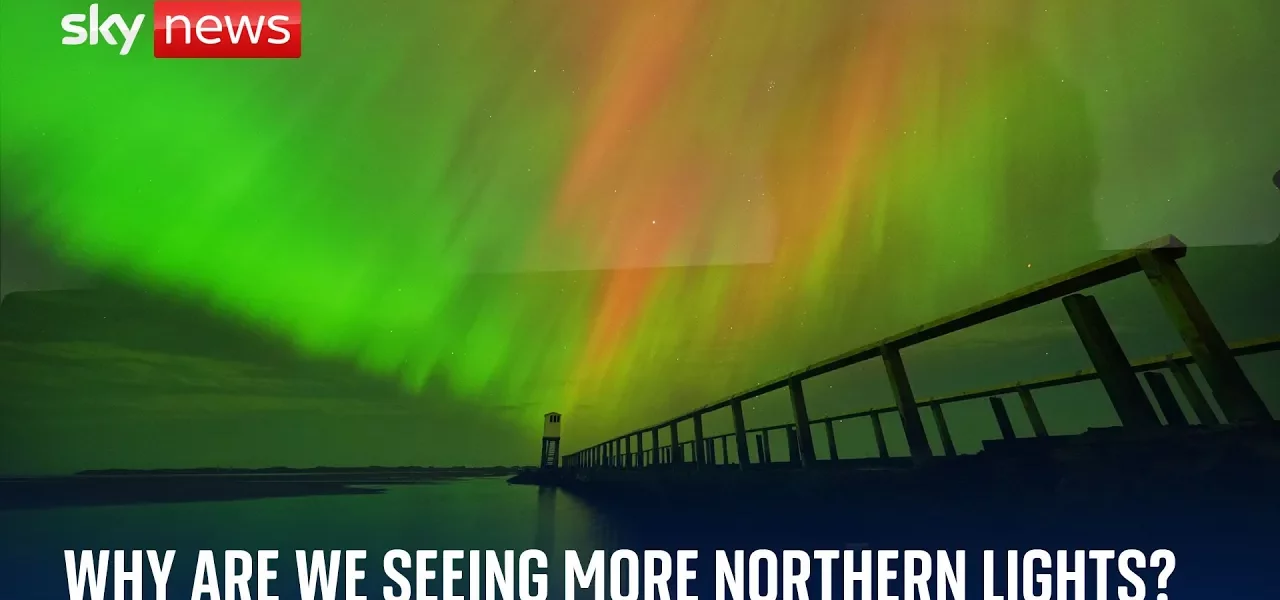The Stunning Northern Lights in the UK: A Scientific Perspective

The Northern Lights have once again graced the skies of the UK, captivating observers with their vibrant colors and breathtaking beauty. This phenomenon, becoming increasingly common, is driven by intricate solar activities and offers a unique glimpse into the wonders of our universe.
Introduction to the Northern Lights
The Northern Lights, also known as the Aurora Borealis, have long fascinated people around the world. In recent years, residents in the UK have been privileged to witness these spectacular displays more frequently. The enchanting colors, ranging from vivid greens to brilliant purples, can be attributed to complex interactions between solar particles and the Earth’s atmosphere. Understanding the science behind this natural wonder not only enhances our appreciation but also explains its increasing visibility in regions where it was once considered a rare occurrence.
The Science Behind the Northern Lights
At the heart of the Northern Lights phenomenon are charged particles emitted by the Sun during events known as coronal mass ejections (CMEs). These explosive bursts release high-energy particles that travel through the vacuum of space and eventually collide with gases in the Earth’s atmosphere.
How Coronal Mass Ejections Work
- CMEs occur during solar flares, where the Sun’s magnetic field lines become tangled and release energy.
- These particles primarily interact with the Earth’s magnetic field, particularly around the poles.
- When particles collide with atmospheric gases, they excite those gases, leading to the emission of light.
Colors of the Aurora
The colors seen in the Northern Lights depend on the type of gas involved in the collisions:
- Oxygen: Produces vibrant greens and occasional pink hues.
- Nitrogen: Responsible for purples and blues, creating a stunning array of colors.
The Increasing Frequency of Northern Lights
Historically, sightings of the Northern Lights in the UK were considered rare. However, the frequency of these events has been on the rise, particularly as the Sun approaches its solar maximum in its 11-year cycle. This cycle significantly affects solar activity and, consequently, the occurrence of auroras.
The Solar Cycle Explained
The solar cycle consists of the following phases:
- Solar Minimum: Characterized by few sunspots and minimal solar activity.
- Solar Maximum: Marked by an increase in sunspots and heightened solar activity.
- Return to Solar Minimum: The cycle completes as activity decreases again.
Impact of Solar Activity on Space Weather
The relationship between sunspots and space weather is crucial. As the number of sunspots increases during solar maximum, so does the likelihood of geomagnetic storms, which can lead to more frequent Northern Lights displays.
Optimal Times for Viewing the Northern Lights
For those eager to witness the Northern Lights, timing is essential. The best period for aurora activity typically spans from September to March, with the current forecast suggesting that the peak solar maximum period could extend through 2026.
Upcoming Opportunities
Recent forecasts indicate that certain northern areas of the UK may experience further auroral activity over the coming weekends. Here are some tips for maximizing your chances of catching a glimpse:
- Check local aurora forecasts and space weather news.
- Seek out locations with minimal light pollution.
- Be prepared for varying conditions; clear skies are ideal.
Conclusion
The Northern Lights are more than just a visual spectacle; they are a remarkable testament to the dynamic relationship between solar activity and our atmosphere. As we continue to witness these stunning displays in the UK, it’s essential to appreciate the science that makes them possible. Stay informed about solar activity, and don’t miss the chance to experience the mesmerizing beauty of the Aurora Borealis. For more insights into astronomy and space weather, check out our related articles on solar cycles and space weather phenomena.
“`




